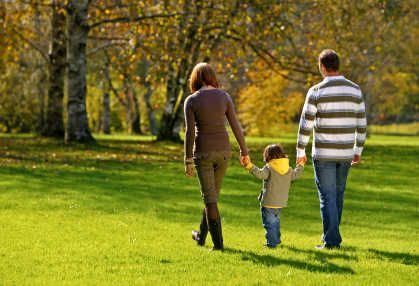What are you presently tolerating in your life? Are you a few pounds overweight? Maybe you're at a job you dislike? Or so disorganized you can't find anything, much less some time to sit and relax? In order to be happier, more productive, more resilient, and healthier, stop tolerating these 10 things today:
Being Unhealthy. With more than two-thirds of the country overweight or obese, building a healthier lifestyle has become a critical component to balance, reining in stress, and building resilience. If you're part of the two-thirds, then start by making small changes. Consistent, small changes over time will add up to big results.
Inaction. People often get stuck because of fear, guilt, or simply not knowing which way to go next. In order to achieve bigger goals, take smaller steps. If you are staring down a goal that seems overwhelming, keep breaking down the goal until you can say with confidence, "Of course, that's so easy I can get that done!"
Negativity. Given how hard the professional world is today and how often you are barraged with negative information, it's easy to be tuned into pessimism and negativity. Fight back with humor. Early studies of humor and health showed that humor strengthened the immune system, reduced pain, and reduced stress levels. Since humor builds positive emotion, it can also help reduce feelings of anger, depression, and anxiety (McGhee, 2010). Additional research in this area shows that positive emotions predicted increases in both resilience and life satisfaction (Cohn et. al., 2009).
Disorganization. Disorganization is a barrier to productivity. If you continually say, "I don't have time to do X," you can get more organized by creating schedules and systems that become habitual. The business book E-Myth by Michael Gerber does a wonderful job of describing the importance of systems in the business world, and the idea is transferable to non-work situations as well. Good systems are fluid, measurable, and can and should be changed as better methods are established or as missing pieces are learned.
Chronic stress. According to a
Catalyst work report, 75-90 percent of all doctor visits are for stress-related complaints. In addition, 68 percent of employees are stressed to the point of feeling extremely fatigued and out of control. Forty-four percent of employees report losing one hour or more a day in productivity due to stress. In addition, 22 percent of employees say they miss more than six work days a year due to stress. The report details that most employees feel stress in four main areas: workload levels, interpersonal issues, job security, and juggling work and personal life. In addition to the pressures of working in corporate America, many people are caring for aging parents or chronically-ill children.
Keeping up with the Joneses. It is our natural tendency to want to know how we stack up to others; it's not enough to know our own performance, but we also want to know how we're doing in comparison to other people. When it comes to having material possessions, people think those possessions will bring us more happiness than they actually do. According to The How of Happiness, in 1940, Americans reported being "very happy" with an average score of 7.5 out of 10. Fast forward to today, and with all of our iPods, smartphones, computers, fast cars, and an income that has more than doubled, what do you think our average happiness score is today? It's a 7.2. Not only does materialism not bring happiness, it's a strong predictor of unhappiness (Lyubomirsky, 2007). One study examined the attitudes of 12,000 freshman when they were 18, then measured their life-satisfaction at age 37. Those who had expressed materialistic aspirations as freshmen were less satisfied with their lives two decades later (Nickerson et al., 2003).
Thinking that perfect exists. Do you have a core value that sounds something like this: "I have to be perfect and do things perfectly?" This faulty assumption can be blamed for procrastination, lack of wanting to hear feedback from others for fear of being criticized, and the tendency to judge yourself and others by very rigid standards. Instead of aiming for perfection, which is unattainable, do as well as you possibly can and call it a day. Focus on achievement rather than perfection.
Everyone's opinion of you. Oh the time and energy I have wasted caring about what other people thought of me. Was I wearing the right thing, did I say the right thing, did I handle that situation correctly? When I had to create a new path after I burned out, I decided to stop caring about the opinions of everyone other than a handful of key people in my life. I decided to be in charge of what I wanted and didn't want.
A job that you hate. Over $300 billion dollars is lost annually due to disengagement in the workplace
according to Gallup, and
USA Today reported that only 45 percent of Americans were
satisfied with their work (2010). This is the lowest level reported since the issue was first researched in 1987. If your circumstances prevent you from changing jobs now, start putting the pieces in place to transition when the time is right.
Being financially illiterate. I know the importance of saving and planning for my financial future, but I find the world of finance about as fun as a root canal. Despite that, I've forced myself to understand the differences between a 401(k) and a 403(b), Roth IRA's, plain IRA's and SEP accounts, and what exactly a no-load mutual fund is. If the world of finance isn't your cup of tea, get some help. There are many resources out there from books to blogs to certified financial planners.
One of my favorite quotes is by Justice Oliver Wendell Holmes. He said, "Too many people die with their music still in them." Maybe that is due in part to our tolerance of the wrong things? What would you add to this list?




